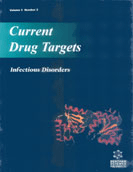Abstract
Glioblastoma is the most common form of primary brain tumor. It remains one of the deadliest of human cancers. Despite work by dedicated clinicians and scientists over the past forty years, the median survival of the afflicted patients remains approximately 12-14 months.
A major challenge in the treatment of glioblastoma involves its inherently infiltrative and invasive properties. The tendency for the glioblastoma cells to microscopically extend beyond the region of gross anatomic abnormality renders complete surgical resection impossible. Further, glioblastoma infiltration into regions of the cerebrum where the blood-brain-barrier remains intact increases the probability of therapeutic failure. In these contexts, understanding the molecular mechanisms underlying the invasive nature of glioblastoma cells may afford opportunities for meaningful therapeutic development.
One of the central principles that emerged from the past decades of cancer research is that cancer cells subvert molecular circuitry inherent with the cell of origin. As differing aspects of these circuits are manifested during normal development, it comes as no surprise that the patterns of glioblastoma migration and invasion are highly reminiscent of those observed in astrocytes during development. These highly coordinated processes include establishment of cell polarity, directional cellular adhesion to the extracellular matrix, cytoskeletal rearrangement, and asymmetric detachment to the extracellular matrix. Our understanding of the factors that mediate these cues have led to novel therapeutic strategies.
This chapter will highlight our current understanding of the signaling pathways that mediate glioblastoma chemotaxis with special focus on pharmacologic inhibitors available for therapeutic interventions.
Keywords: Chemotaxis, brain tumor, CD44, cadherin, integrin, metalloproteinases, receptor tyrosine kinase, inhibitors/therapeutics.






















